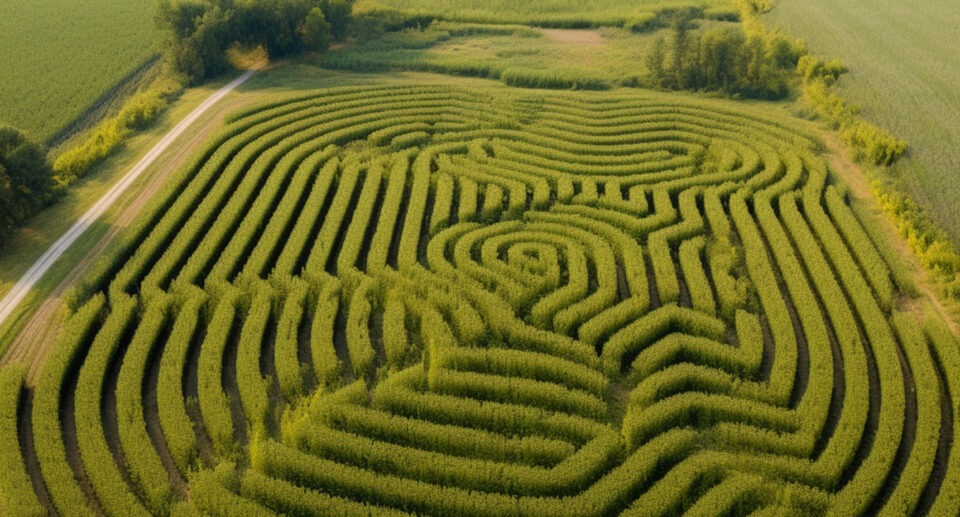How Did Settlers Overcome Challenges Of The Great Plains

The Great Plains, a huge swath of grasslands across central North America, beckoned with the prospect of a new life. Many nineteenth-century settlers saw it as an opportunity to buy property, establish a homestead, and break free from the confines of their prior existence. However, the supposedly lovely scenery revealed a brutal reality. How did settlers overcome the challenges of the Great Plains and build a living in this harsh environment? This interactive journey digs into the challenges they encountered, the creative solutions they created, and the tenacity that drove their success.
A Landscape of Extremes: Obstacles Thrown Up by the Great Plains
The Great Plains posed a unique set of problems that required unflinching perseverance and an ability to adapt:
A Temperamental Climate
The region had dramatic extremes, with sweltering summers broken by unpredictable rains and terrible winters marked by howling blizzards and sub-zero temperatures. These temperature changes taxed both settlers and their crops, necessitating continual care and inventiveness.
Aridity and the Struggle for Water
Unlike the rich farmlands of the East, the Great Plains got substantially less rainfall, making water shortages a continual problem. Finding adequate water sources for consumption and irrigation proved to be a persistent challenge. Settlers had to deal with unreliable rivers, depleting aquifers, and the constant fear of drought.
Isolation and the Weight of Loneliness
The huge distances on the Plains meant that newcomers were sometimes separated from established towns and social networks. This isolation might result in loneliness and depression, particularly for families with small children. The expanse of the countryside exacerbated emotions of isolation, making social interaction an essential component of survival.
Unfamiliar Terrain and the Challenges of Cultivation
The settlers were used to the rich, forested landscapes of the East. The Great Plains, on the other hand, provided a unique challenge: huge swaths of treeless prairie with thick, stiff sod that traditional agricultural equipment struggled to break through. This unique environment necessitated novel farming methods and techniques.
Hostile Wildlife and the Threat of Predators
The Great Plains were home to a diverse range of wild creatures, some of which presented a hazard to people and cattle. Predators like as wolves, coyotes, and bears endangered the settlers’ livelihoods and safety, forcing continual vigilance and the development of effective hunting and defensive tactics.
From Hardship to Homestead: Overcoming Challenges with Innovation and Grit
Despite formidable barriers, pioneers showed incredible creativity in addressing the problems of the Great Plains.
Dry Farming Techniques
Traditional farming practices were unsuitable for the dry environment. To retain soil moisture, settlers used dry farming practices such as deep plowing and planting drought-tolerant crops like sorghum and corn. These new approaches need rigorous planning and careful management of water supplies.
Technological Advancements
New technology built expressly for the harsh circumstances of the Plains transformed settlers’ lives. Windmills were popular, pumping water from deep wells for agricultural and household usage. Steel plows were substantially stronger than wooden plows, making it simpler to break through the stiff prairie sod and cultivate more efficiently. In the absence of easily accessible fence wood, barbed wire fencing served as a solution for regulating cattle and setting boundaries.
Community Building and Mutual Support
Settlers understood the value of community in conquering the hardships of the Great Plains. They built “sodbuster” communities, which were frequently based on a church or schoolhouse, to foster social connections and mutual assistance. Neighbors helped one other with everything from sharing tools and knowledge to giving childcare and emotional support. Barn raisings became a symbol of joint endeavor, emphasizing the power that comes from working together. These societies instilled a sense of connection and resilience, which were critical for life on the frontier.
Resourcefulness and Adaptation
The harsh conditions of the Great Plains demanded innovation from settlers. They learned to survive on the earth, utilizing buffalo skins for clothing and shelter and curing meat for long-term preservation. They tailored their attire to the harsh weather conditions, employing thick textiles in the cold and lighter fabrics in the scorching summer. The capacity to adapt and make the most of limited resources was critical to their success.
Lessons Learned from the Settlers of the Great Plains
How did settlers overcome the challenges of the Great Plains and gain a footing in this difficult environment? They survived and prospered because of a combination of tenacity, inventiveness, and a strong feeling of community. Their stories teach us significant lessons for overcoming problems in our own lives.
Adaptability in the Face of Change
Flexibility and willingness to adapt to changing conditions are critical for success. The pioneers of the Great Plains couldn’t rely on old tactics and had to continuously modify their plans to the harsh reality of their surroundings. This lesson is relevant to our lives as well. When faced with unanticipated obstacles, we must be prepared to change our plans and try new techniques.
The Power of Ingenuity
Challenges frequently stimulate creativity. The Great Plains pioneers were obliged to invent new tactics and technologies to solve the challenges they faced. This spirit of creation may be transferred to our personal life. When faced with a challenge, we may use our resourcefulness to develop new solutions.
The Strength of Community
Developing strong social ties brings comfort, drive, and a sense of belonging during tough times. The inhabitants of the Great Plains depended greatly on their communities to survive. This underlines the necessity of developing good ties in our personal life. Surrounding ourselves with supportive friends, family, and coworkers may give us the motivation and fortitude we need to overcome obstacles.
Persistence and Determination
Overcoming obstacles seldom occurs overnight. The pioneers of the Great Plains had to endure years of suffering before they could establish themselves effectively. This teaches us the value of tenacity and determination. Do not be disheartened by setbacks; instead, stay focused on your goals and keep pushing forward.
The narrative of the Great Plains settlers demonstrates the human spirit’s ability to overcome hardship. Their legacy serves as a reminder that with hard effort, inventiveness, and a supporting network, we can overcome hurdles and achieve our objectives, even when they appear impossible. So, the next time you encounter a challenge, remember the pioneers who tamed the Great Plains and be inspired by their steadfast persistence and pioneering spirit. Their narrative serves as a light of hope, reminding us that every one of us has the ability to overcome hardship and establish our own route to success.












